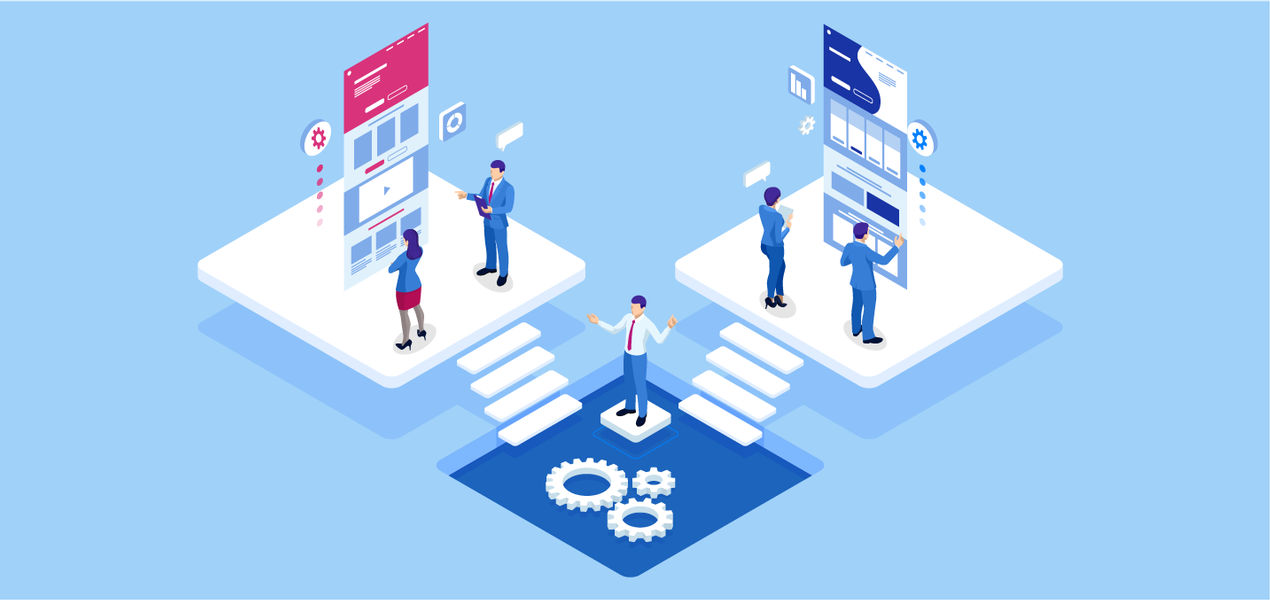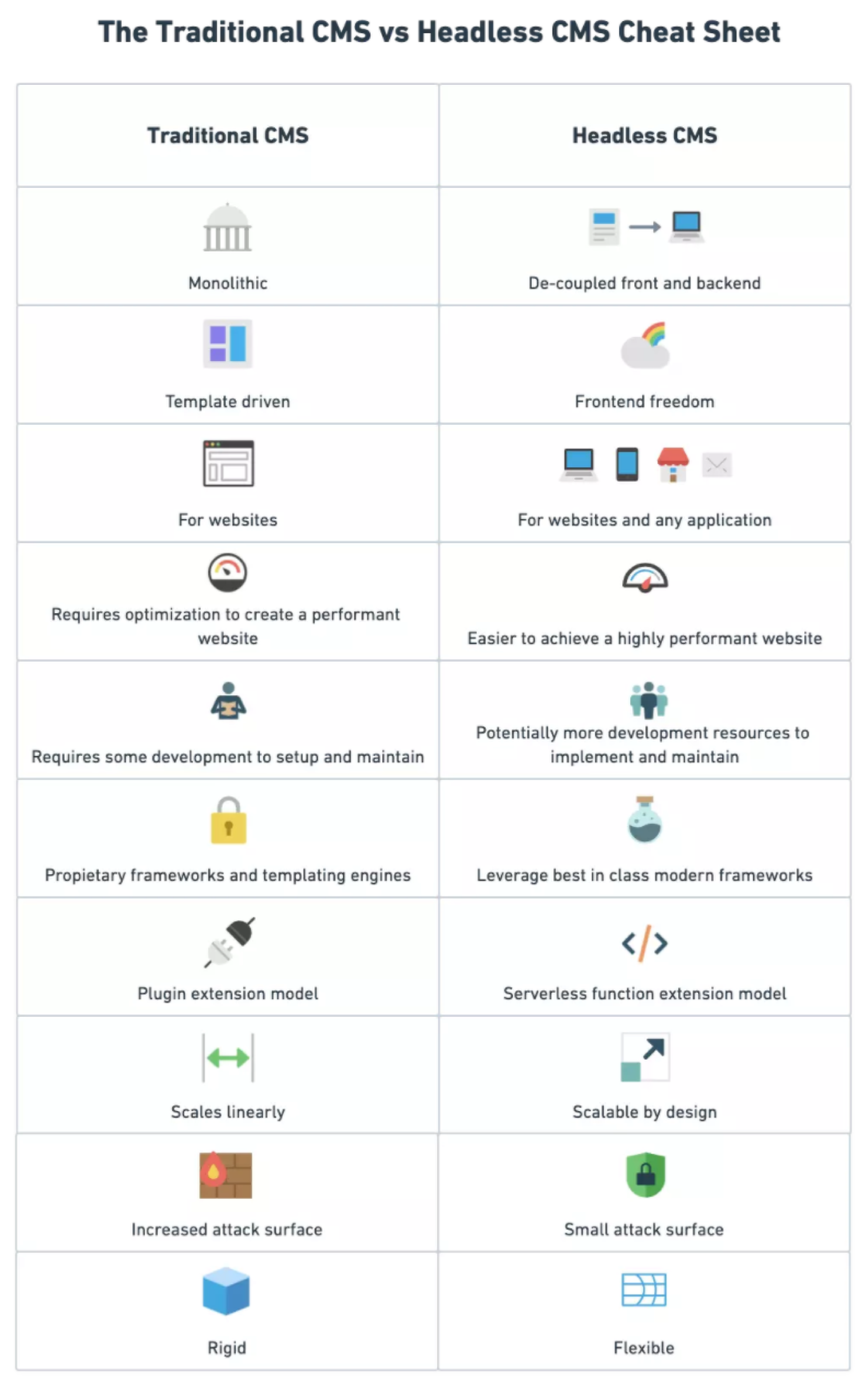Headless CMS vs. Traditional CMS

In this guest post by our partner, Amplience, we explore the differences between a headless CMS and a traditional CMS as well as review the benefits of each. This article was originally published on Amplience’s blog on September 9, 2020.
We often get asked what the real differences are between a headless CMS and a traditional CMS. Here we take a no-nonsense approach to defining each, their benefits, and who they are for.
We’ve also provided a handy cheat sheet comparison table, so you can at a glance see which option may be right for you.
What is a headless CMS?

A headless Content Management System (CMS) provides tooling that allows non-technical users to create, manage and modify content for a website or application. The frontend could be a website, mobile app, or another smart device. A headless CMS provides APIs that connect the content repository with the frontend (head).
What is a traditional CMS?

A traditional CMS is software that helps users create, manage, and modify content for a website without the need for specialized technical knowledge. A traditional CMS is monolithic and rigid in its architectural implementation, creating firm bonds between the frontend templates and the backend administration, rendering, controllers, and databases. A traditional CMS typically approaches extensibility with a plugin framework to add additional features and functionality to a website.
The benefits of headless CMS
Faster editing experiences
A headless CMS enables users to rapidly model new content types quickly to drive end-user experiences. These content models power the frontend user interface and overall experience.
Manage content for multiple channels
As a headless CMS is a backend you have total freedom to decide which frontend applications you want to deploy, whether that be for a website, mobile application, IoT device, and more. All of this content can be managed from within a single hub and accessed from a consistent content delivery API.
Developer flexibility
A headless CMS empowers developers to select the right frontend tools, frameworks, and languages that match their skillset and the business requirements.
Lightning-fast load times
Making use of modern technologies like JavaScript frameworks and the JAMstack can lead to impressive page load times and Google Lighthouse results. This then leads to better SEO and organic reach, and higher conversions.
Easier scaling
Headless lets you manage your content from a single source of truth. CDNs can balance traffic through the system and high-performance cloud-based hosting services can be leveraged such as Vercel and Netlify.
Enhanced security
The attack surface for a headless CMS is smaller than that of a more traditional CMS as the backend is separated from the frontend securely.
The benefits of traditional CMS
Superior visual administration experience
Generally, an all-in-one, out-of-the-box solution will provide a better administration interface with WYSIWYG editors, drag and drop UIs and live editing. Headless platforms such as Amplience are making large strides in this space to provide an on-par or superior administration experience.
Lower implementation cost and time
It’s no secret that a headless CMS will require some additional implementation cost and time as the frontend has to be either built or bought and integrated separately from the backend. A traditional CMS provides a more streamlined out-of-the-box experience.
Simple templates
A traditional CMS is focused on driving website-based experiences and this means that templates are the driving force behind a traditional CMS. These can be quite restrictive and rigid so if you’re looking to create a fairly standard frontend experience, a traditional CMS might be for you.
Which is right for your business?
A traditional CMS may be the better option for smaller organizations that do not have the engineering resources to effectively implement a headless CMS. A traditional CMS is also the better option for simple websites that don’t have or need any features outside what a standard CMS template already covers.
A headless CMS is likely a good fit for your business if you are focused on creating differentiated customer-first experiences, don’t want to use a template for your website, or if you want to add functionality that a traditional CMS can’t provide. If your organization requires additional flexibility or needs to deploy content to multiple channels a headless CMS is likely the right fit.
Make sure your organization has the resources and time for a development team to create the frontend websites or applications. In addition, a headless CMS should be used when additional flexibility is needed, for example: if a mobile or television app needs to be developed with the same content as the web app.
Are you considering a headless approach for your next CMS, why not speak to one of our industry experts to find out if Amplience is the right fit for your business or if another headless or traditional CMS would be the right move based on your requirements.
The CMS comparison cheat sheet
As promised at the beginning of this article, please find our handy comparison cheat sheet that clearly defines the differences between traditional and headless Content Management Systems.

Resource Center

A new blog series about the critical eCommerce capabilities missing in most eCommerce platforms for B2B companies. #1: Quoting & Sales Support

A closer look from the Ultra perspective on what we really mean when we talk about headless commerce and why it may not be right for every company.

Davis Art is now the only online K-12 publisher dedicated to the arts, creating top-notch curriculum and resources for art educators nationwide, all from the Ultra Commerce platform.
